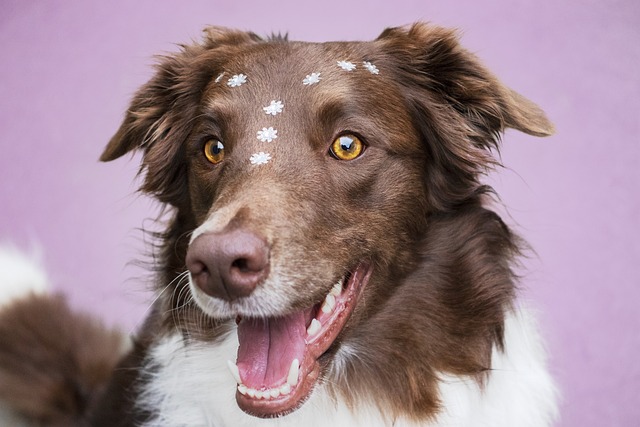
How can I tell if my dog's heatstroke is serious
Let’s be real: It’s a sticky August morning in Los Angeles, and you took your 2-year-old Golden Retriever, Max, for a walk a little later than usual
You’ve just settled on the couch for a movie night when your dog’s nails start clicking across the hardwood like tiny tap dancers. Or maybe you notice them slipping on the kitchen tiles more often. These little signs might make you wonder: does my dog really need their paws trimmed? Turns out, it’s not just about aesthetics—regular paw care plays a vital role in your pet’s health.
Long paw hair might look cute, but it can quickly become a hazard. When fur grows too long between the pads, it acts like a sponge, trapping dirt, ice, salt, and even sharp debris. In winter, snowballs can form, causing discomfort and potentially leading to cuts. Some regions require pet owners to keep their dogs’ coats and paws clean to prevent spreading diseases, so grooming serves a public health purpose too.
Overgrown nails are more than just noisy. They can curve into your dog’s paw pads, causing pain and difficulty walking. In extreme cases, this leads to limping, joint problems, or even infections. Many animal welfare guidelines recommend regular nail trimming as part of basic pet care, and neglecting it could be seen as a violation of proper animal husbandry practices in certain areas.
 Grooming your dog’s paws at home can be a bonding experience, but safety comes first. Use sharp, pet-specific clippers—human nail scissors won’t cut it (literally). If you’re unsure how to trim nails without hitting the quick (the sensitive blood vessel inside), start with just the tips. Better to trim a little at a time than risk causing bleeding, which can make future grooming sessions a nightmare.
Grooming your dog’s paws at home can be a bonding experience, but safety comes first. Use sharp, pet-specific clippers—human nail scissors won’t cut it (literally). If you’re unsure how to trim nails without hitting the quick (the sensitive blood vessel inside), start with just the tips. Better to trim a little at a time than risk causing bleeding, which can make future grooming sessions a nightmare.
Not all dogs tolerate paw trimming easily. Some get anxious or defensive, especially if they’ve had a bad experience. If your dog struggles, consider positive reinforcement. Offer treats, gentle praise, and short breaks during the process. Remember, forcing the issue can create more fear; it’s better to take your time or seek help from a professional groomer who’s trained to handle difficult pets.
Certain breeds have unique paw care needs. Dogs with long, floppy fur like Shih Tzus or Poodles require more frequent trims to avoid matting. Working breeds with active lifestyles might wear down their nails naturally, but still benefit from hair removal between the pads. Always research your dog’s breed characteristics and adjust your grooming routine accordingly.
Professional groomers aren’t just a luxury—they’re a valuable resource. They know how to handle tricky paws safely and can spot early signs of problems like ingrown nails or irritated skin. Many grooming salons follow strict sanitation protocols required by local regulations, ensuring your dog’s safety during the process. Plus, leaving the trimming to the experts saves you time and stress.
Taking care of your dog’s paws shows you understand their needs. Whether you choose DIY grooming or professional help, regular trims keep your furry friend comfortable, active, and happy. After all, those paws carry them through every adventure, from park runs to lazy afternoons at home. A little attention now goes a long way in keeping their paws healthy for years to come.

Let’s be real: It’s a sticky August morning in Los Angeles, and you took your 2-year-old Golden Retriever, Max, for a walk a little later than usual

You're enjoying a summer afternoon at the park when you notice your dog has stopped panting and appears disoriented - their gums are bright red

Let’s paint the picture: You’re in your Denver apartment, watching your 4-year-old Boston Terrier, Ruby, plop down mid-play session with her favorite toy

Many dog owners notice their pets nails seem shorter after regular walks,but how much does this daily activity actually help?The answer depends on where you walk—concrete sidewalks or asphalt streets gently file nails as a dog's paws hit the ground

Most dog owners notice their pup scooting across the carpet at some point, but few connect it to impacted anal glands. These small sacs near a dog’s rectum secrete a scent for marking territory

Most vets agree that regular dog teeth cleaning is key to avoiding painful dental issues later. For healthy adult dogs, a professional cleaning at the vet’s office every 12 to 18 months usually works well.